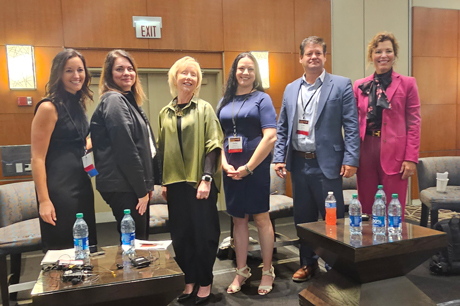As operators build back occupancy post-pandemic, they’re also drawing up new blueprints for success.
Operators are trying to figure out what baby boomers want in a senior living community. A renewed emphasis on customer service is critical. New marketing strategies are embracing the latest technology, even artificial intelligence. “Brand” and “culture” are two words that operators bring up over and over again.
While the labor crunch has eased a bit, operators are still shorthanded. Effective recruitment and retention practices are vital for sound operations. Happy employees make for happy residents and more referrals.
“Operators forgot what we should be focused on during the pandemic,” said Fran Palma, senior vice president at Covenant Living, based in Skokie, Illinois. “Right now, we’re getting back to business as usual.”
Palma joined a panel of senior living operators during a well-attended session at the seventh annual InterFace Seniors Housing Midwest conference. The event was held in Chicago on Wednesday, September 27. The conference was sponsored by France Media’s InterFace Conference Group and Seniors Housing Business.
The session was titled, “Best in Class Operators’ Blueprint for Success in a Challenging Market.” Dani Merlino, vice president at Grow Your Occupancy, moderated the panel.
“Embrace baby boomers,” said panelist Gale Morgan, senior vice president at Mather, a senior living provider based in Evanston, Illinois. “Boomers will change the industry.”
Mather is opening a continuing care retirement community this March in Tysons, Virginia. Two thirds of the depositors are age 74 or younger.
“They want nothing like what we saw pre-pandemic,” said Morgan, adding that boomers are looking for personalization and innovation.
That applies to marketing, too.
“We have to be more creative and use the tools that are available,” said Shelby Anderson, corporate director of sales and marketing at Sodalis Senior Living, based in San Marcos, Texas.
Sodalis boosts engagement with prospects via video, text and email. Messages are tailored based on how prospects want to be contacted. Low-pressure emails powered by artificial intelligence (AI) nurture stale leads so salespeople don’t waste their time.
Covenant Living has also had some success with AI. It creates a call to action when someone visits the website, which has increased leads.
“Boomers want to self-educate,” said Morgan. She added that Mather starts relationships with prospects by providing something of value, such as a health tip of the day from its Institute on Aging. “We’ve had success with that,” she said.
Fine-tune employment strategies
After several tough years, operators are rethinking their approach to recruiting and retaining employees.
Mather re-trained all of its employees, not just new hires. A buddy system paired experienced workers with new employees to reinforce the customer service message.
Sodalis emphasizes retention. Many of its employees are single moms living paycheck to paycheck. When gas prices went up, Sodalis offered a gas bonus. When kids returned to school, the company gave out backpacks filled with school supplies. Last summer, kids could come to work with their parents and participate in an intergenerational program with residents.
Those extra efforts have paid dividends. “We have not used employment agency help in two years,” said Anderson.
Effective onboarding is key. Lutheran Life Communities, based in Arlington Heights, Illinois, conducts a 20-day orientation focused on the organization’s mission and the importance of the new recruit’s role.
Many employee break rooms are now outfitted much more nicely than before. “We are investing to meet the needs of the team, which has helped retention,” said Sloan Bentley, president and CEO at Lutheran Life.
Centralize for success
Moderator Merlino asked whether centralizing operations is effective.
Arrow Senior Living, based in St. Charles, Missouri, centralized its customer relationship management (CRM) system. Hollie Walker, vice president, said she likes the fact that she can review marketing data across all the communities to see which approaches work best.
Sloan at Lutheran Life believes the back-of-the-house operations, such as accounting, should be centralized. The resident-facing, front-of-the-house operations, though, should be localized to maintain the community’s unique personality.
The approach offers efficiency and cost savings, but comes with its own challenges, noted Sloan. For example, under a centralized sales function, the executive director may not feel responsible for results. So, Lutheran Life rewrote job descriptions, making executive directors responsible for the life experience of team members and residents. The executive director must hold everyone accountable.
“They are the glue to keep it all together,” said Sloan.
— Jane Adler

